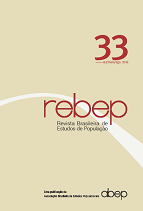Waiting for the coming drought: adaptive capacity in rural communities of the Brazilian semiarid
DOI:
https://doi.org/10.20947/S0102-30982016a0012Keywords:
Adaptive capacity, Climate vulnerability, Public policyAbstract
This article evaluates the availability of resources needed to create adaptive capacity in rural communities of the Brazilian semiarid. The research uses primary data obtained with the application of questionnaires. Given the large geographic extent of the region, rural communities inserted in areas susceptible to desertification of Ceará were selected to the sample. The discussion is made based on a system of indicators defined by consulting with experts (DELPHI - Methodology ), and divided into four dimensions of adaptive capacity: social capital, economic capital, human capital and natural capital, assuming that adaptive capacity is the availability of a set of resources to promote local welfare. The analysis of the distribution of selected indicators shows that communities have lower levels of resources needed for adaptation, and the critical points are highlighted in the human capital dimension. It is believed that government actions that could improve adaptive capacity of rural communities in the semiarid does not find userfriendly environment for expressing their potential. The biggest challenge is the adoption of integrated strategies for education, and training of the population, which act crosswise in all public policies aimed to local development.Downloads
Downloads
Published
How to Cite
Issue
Section
License
Papers published in Rebep are original and protected under the Creative Commons attribution-type license (CC-BY). This license allows you to reuse publications in whole or in part for any purpose, free of charge, even for commercial purposes. Any person or institution can copy, distribute or reuse the content, as long as the author and the original source are properly mentioned.

